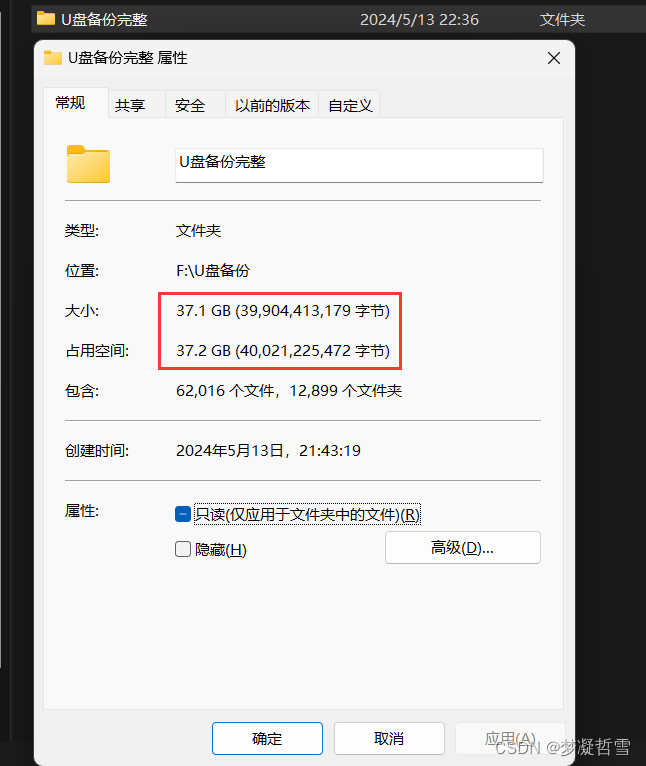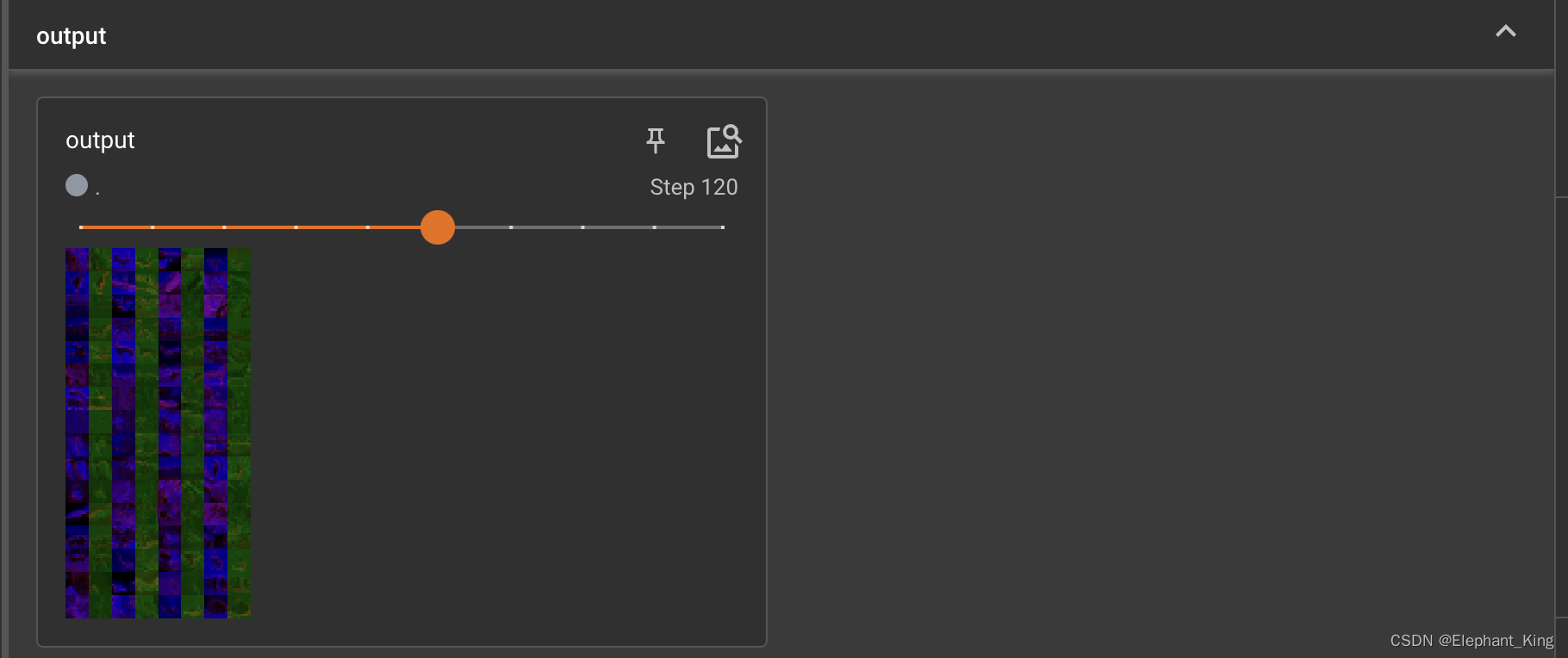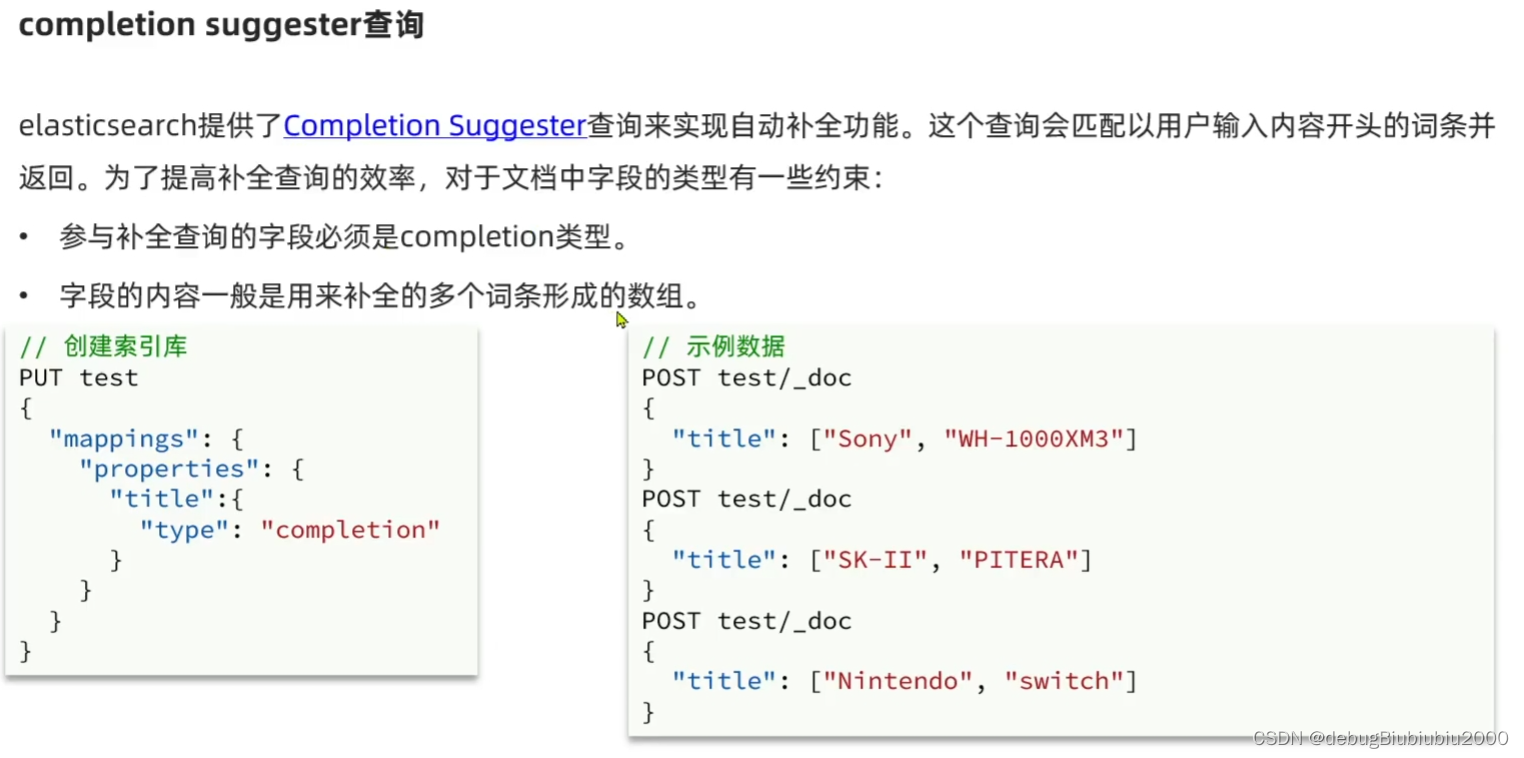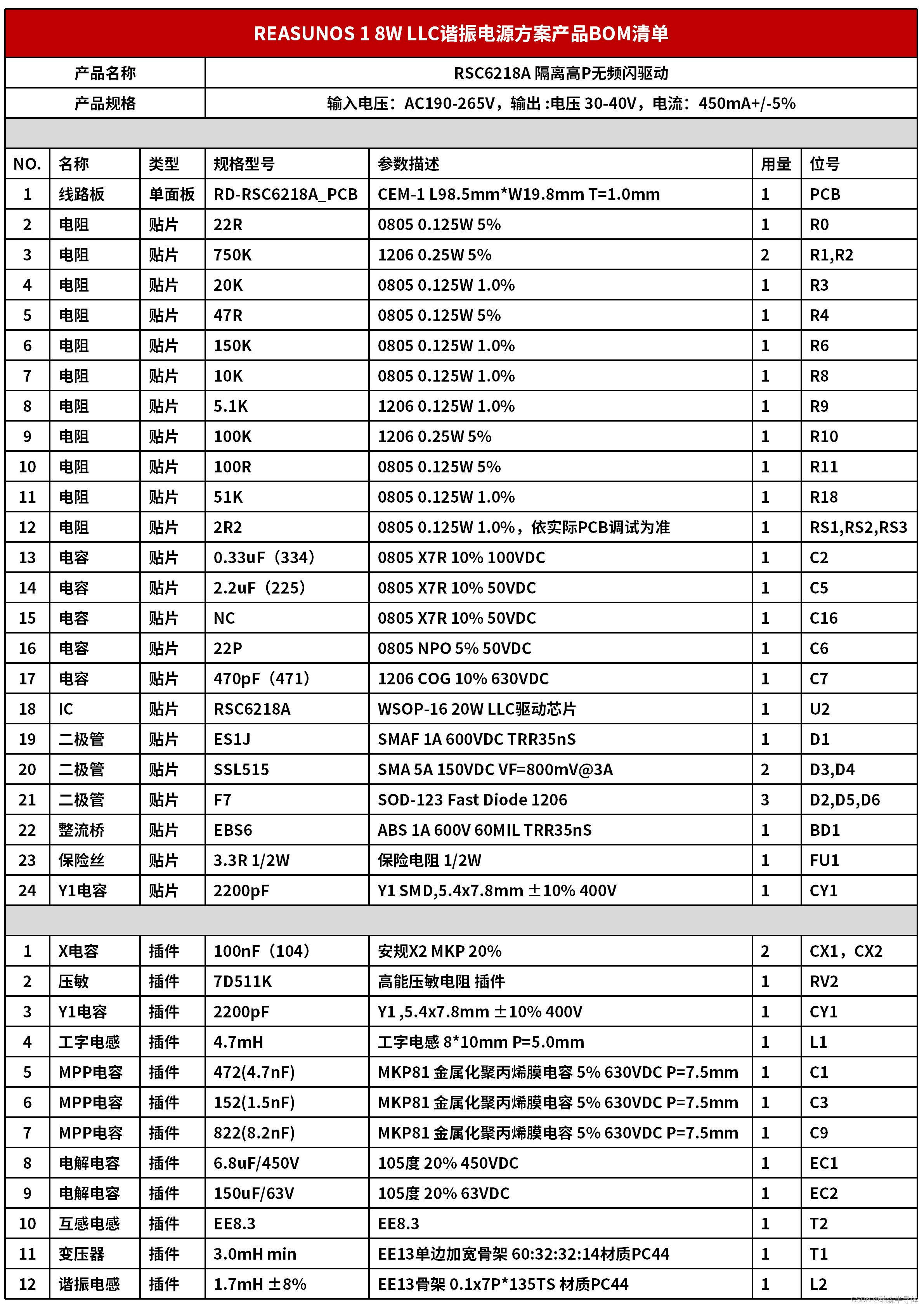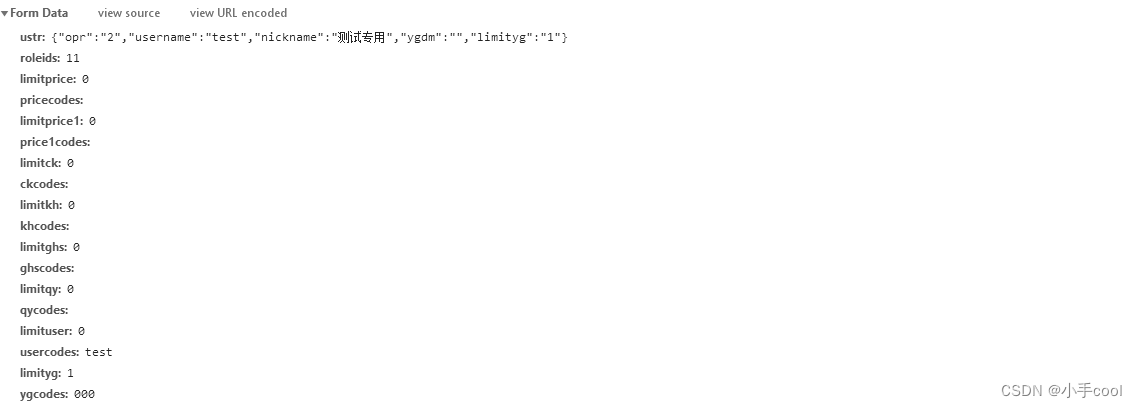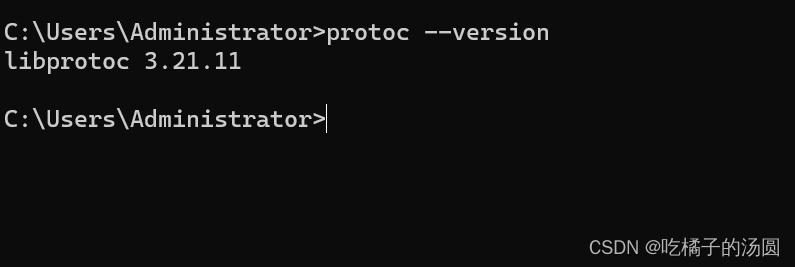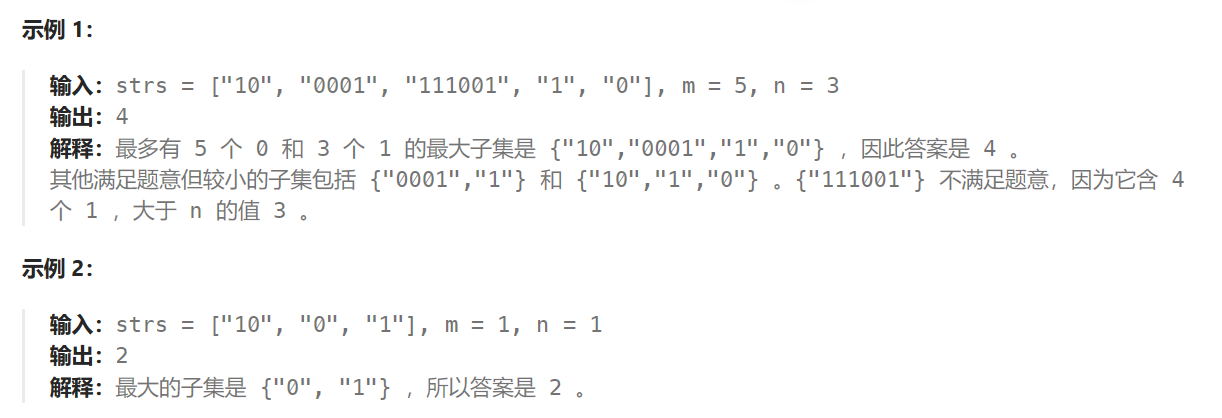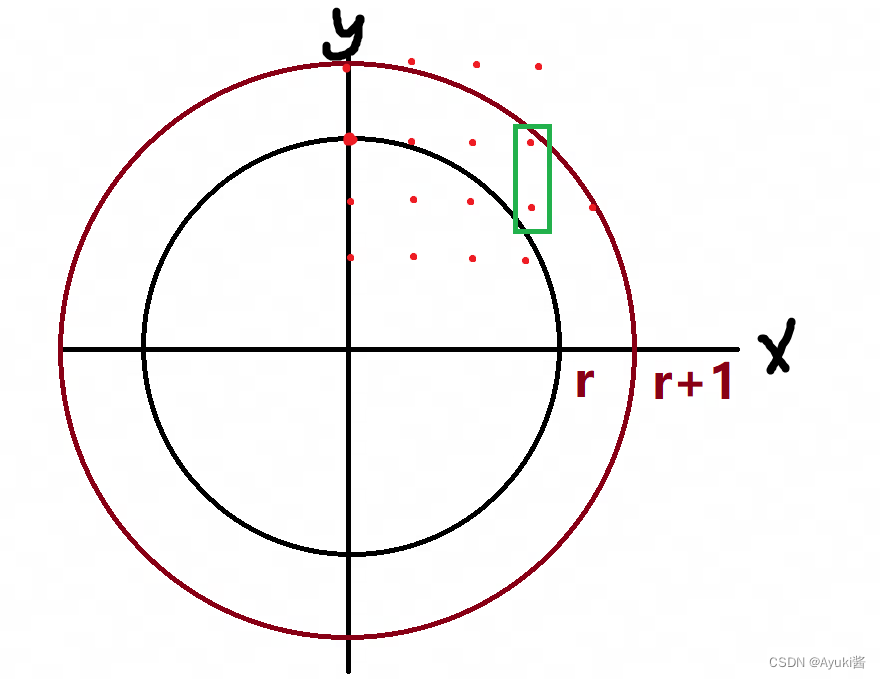文章目录
- 栈的概念和结构
- 栈的实现
- 1.顺序存储结构
- 栈的定义
- 初始化栈
- 入栈
- 出栈
- 获取栈顶元素
- 获取栈中有效元素个数
- 检测栈是否为空,如果为空返回非零结果,如果不为空返回0
- 销毁栈
- 栈的打印
- 完整代码(包括测试代码)
- Stack.h
- Stack.c
- test.c
栈的概念和结构
栈:一种特殊的线性表,其只允许在固定的一端进行插入和删除元素操作。进行数据插入和删除操作的一端称为栈顶,另一端称为栈底。栈中的数据元素遵守后进先出LIFO(Last In First Out)的原则。
压栈:栈的插入操作叫做进栈/压栈/入栈,入数据在栈顶。
出栈:栈的删除操作叫做出栈。出数据也在栈顶。
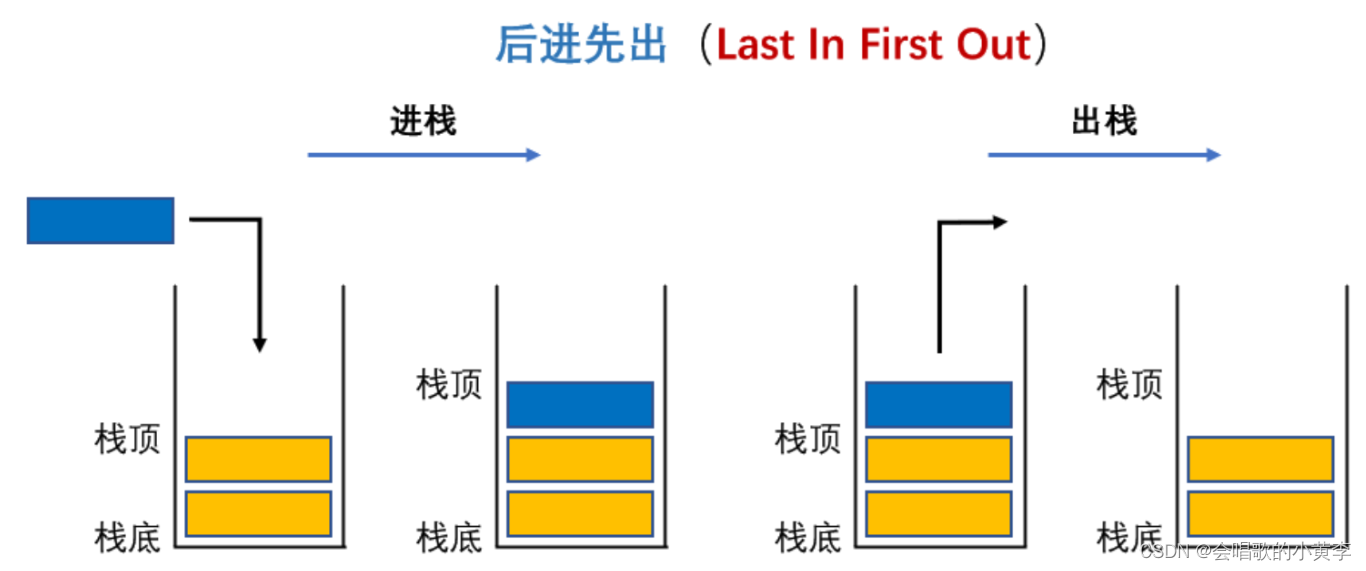
虽然入栈和出栈都只能在栈顶进行,但是入栈和出栈的时间我们可以自行控制,比如进栈序列为 1,2,3,4 ,进栈过程中可以出栈的。
那么可以有14种出栈序列,我们讲这个就是想说明栈是:一种入栈顺序,多种出栈顺序。

栈的实现
栈的实现一般可以使用数组或者链表实现,但是相对而言数组的结构实现更优一些。因为数组在尾上插入数据的代价比较小。
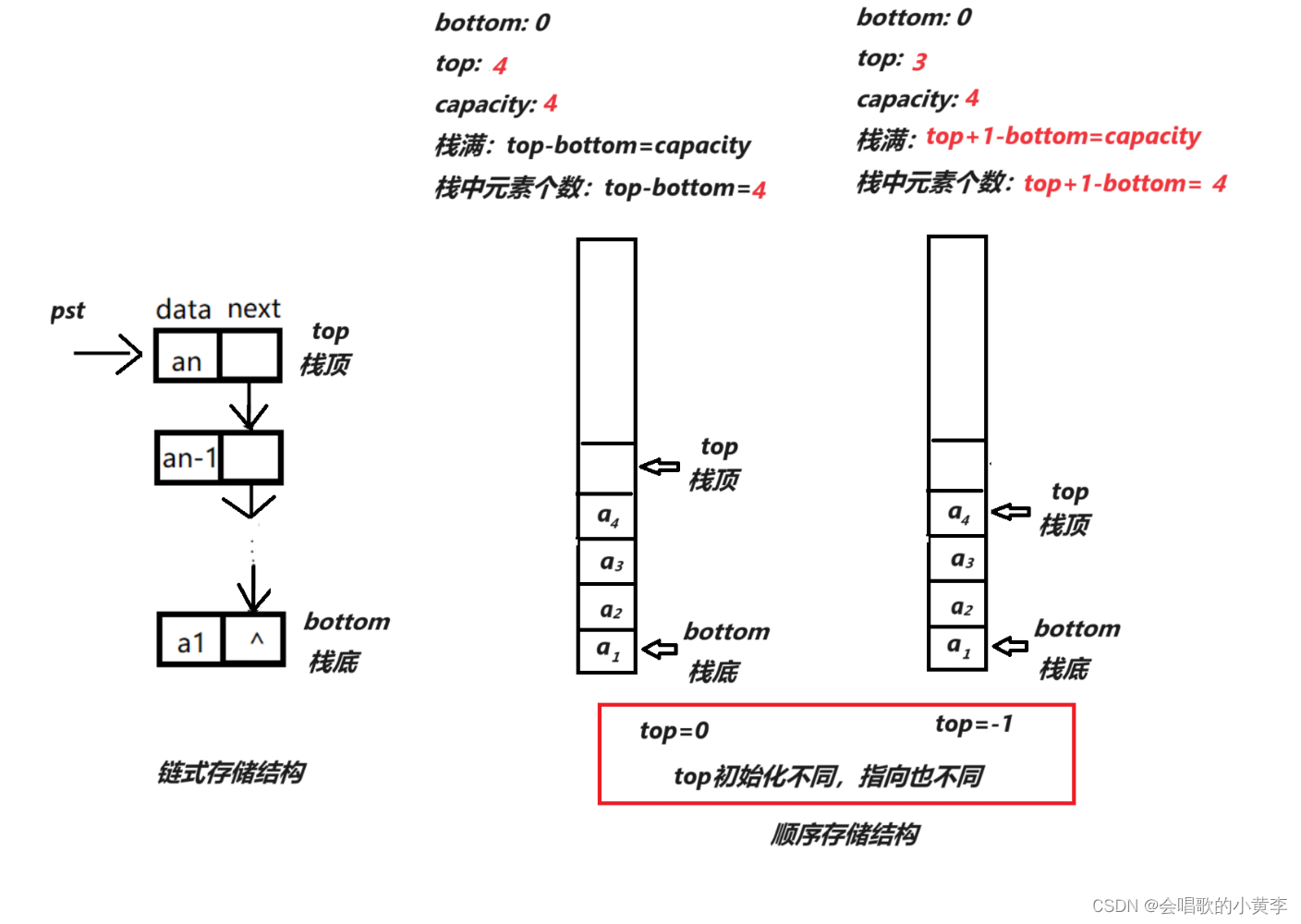
首先新建一个工程:
Stack.h(顺序栈的类型定义、接口函数声明、引用的头文件)
Stack.c(顺序栈接口函数的实现)
test.c(主函数、测试栈各个接口功能)
完整的代码放在后面(包括测试代码),这里就不会展示测试的效果图。大家可以自己别敲边按测试代码测试。图解会写的很详细的,么么😙
1.顺序存储结构
栈的定义
// 下面是定长的静态栈的结构,实际中一般不实用,所以我们主要实现下面的支持动态增长的栈
typedef int STDataType;
#define N 10
typedef struct Stack
{
STDataType a[N];
int top; // 栈顶
}ST;
// 支持动态增长的栈
typedef int STDataType;
typedef struct Stack
{
STDataType* a;
int top;// 栈顶
int capacity;// 容量
}ST;
初始化栈
这里初始化的话,如果将top置为0;那么top指向的就是栈顶元素的下一个位置,如果将top置为-1,那么top指向的就是栈顶元素。上图标识了可以仔细阅读。我们这里实现的是top为0。
// 初始化栈
void STInit(ST* pst)
{
pst->a = NULL;
pst->capacity = 0;
//表示指向栈顶元素的下一个位置
pst->top = 0;
指向栈顶元素
//pst->top = -1;
}
入栈
// 入栈
void STPush(ST* pst, STDataType x)
{
assert(pst);
if (pst->top == pst->capacity)//判断是否满栈
{
int newcapacity = pst->capacity == 0 ? 4 : pst->capacity * 2;//三字母词, pst->capacity == 0 则将4赋值给它,不为零则扩容其二倍 pst->capacity * 2
STDataType* tmp = (STDataType*)realloc(pst->a, sizeof(STDataType) * newcapacity);
if (tmp == NULL)
{
perror("realloc");
return;
}
pst->a = tmp;
pst->capacity = newcapacity;
}
pst->a[pst->top] = x;
pst->top++;
}
出栈
// 出栈
void STPop(ST* pst)
{
assert(pst);
assert(pst->top > 0);
pst->top--;
}
获取栈顶元素
// 获取栈顶元素
STDataType STTop(ST* pst)
{
assert(pst);
assert(pst->top);
return pst->a[pst->top - 1];
}
获取栈中有效元素个数
// 获取栈中有效元素个数
int STSize(ST* pst)
{
assert(pst);
return pst->top;
}
检测栈是否为空,如果为空返回非零结果,如果不为空返回0
// 检测栈是否为空,如果为空返回非零结果,如果不为空返回0
bool STEmpty(ST* pst)
{
assert(pst);
return pst->top == 0;
}
销毁栈
// 销毁栈
void STDestroy(ST* pst)
{
assert(pst);
free(pst -> a);
pst->a = NULL;
pst->top = 0;
pst->capacity=0;
}
栈的打印
栈的打印:栈的实现,不能像顺序表一样,去实现一个打印函数来遍历栈并输出,这样就不符合栈的特点了(只能在栈顶插入删除,后进先出),所以我们这样来实现出栈:获取并打印栈顶元素,再删除栈顶元素,继续获取新的栈顶元素。我写在测试代码里面了,需要的可以去看看。
完整代码(包括测试代码)
Stack.h
#pragma once
#include<stdio.h>
#include<stdlib.h>
#include<assert.h>
#include<stdbool.h>
// 下面是定长的静态栈的结构,实际中一般不实用,所以我们主要实现下面的支持动态增长的栈
//typedef int STDataType;
//#define N 10
//typedef struct Stack
//{
// STDataType a[N];
// int top; // 栈顶
//}ST;
typedef int STDataType;
// 支持动态增长的栈
typedef struct Stack
{
STDataType* a;
int top;// 栈顶
int capacity;// 容量
}ST;
// 初始化栈
void STInit(ST* pst);
// 入栈
void STPush(ST* pst, STDataType x);
// 出栈
void STPop(ST* pst);
// 获取栈顶元素
STDataType STTop(ST* pst);
// 获取栈中有效元素个数
int STSize(ST* pst);
// 检测栈是否为空,如果为空返回非零结果,如果不为空返回0
bool STEmpty(ST* pst);
// 销毁栈
void STDestroy(ST* pst);
Stack.c
#define _CRT_SECURE_NO_WARNINGS 1
#include"Stack.h"
// 初始化栈
void STInit(ST* pst)
{
pst->a = NULL;
pst->capacity = 0;
//表示指向栈顶元素的下一个位置
pst->top = 0;
//指向栈顶元素
//pst->top = -1;
}
// 入栈
void STPush(ST* pst, STDataType x)
{
assert(pst);
if (pst->top == pst->capacity)
{
int newcapacity = pst->capacity == 0 ? 4 : pst->capacity * 2;
STDataType* tmp = (STDataType*)realloc(pst->a, sizeof(STDataType) * newcapacity);
if (tmp == NULL)
{
perror("realloc");
return;
}
pst->a = tmp;
pst->capacity = newcapacity;
}
pst->a[pst->top] = x;
pst->top++;
}
// 出栈
void STPop(ST* pst)
{
assert(pst);
assert(pst->top > 0);
pst->top--;
}
// 获取栈顶元素
STDataType STTop(ST* pst)
{
assert(pst);
assert(pst->top);
return pst->a[pst->top - 1];
}
// 获取栈中有效元素个数
int STSize(ST* pst)
{
assert(pst);
return pst->top;
}
// 检测栈是否为空,如果为空返回非零结果,如果不为空返回0
bool STEmpty(ST* pst)
{
assert(pst);
return pst->top == 0;
}
// 销毁栈
void STDestroy(ST* pst)
{
assert(pst);
free(pst -> a);
pst->a = NULL;
pst->top = 0;
pst->capacity=0;
}
test.c
#define _CRT_SECURE_NO_WARNINGS 1
#include"Stack.h"
int main()
{
ST st;
STInit(&st);
STPush(&st, 1);
STPush(&st, 2);
printf("%d \n", STTop(&st));
STPop(&st);
STPush(&st, 3);
STPush(&st, 4);
STPush(&st, 5);
while (!STEmpty(&st))
{
printf("%d ", STTop(&st));
STPop(&st);
}
printf("\n");
int r = STSize(&st);
printf("%d\n", r);
bool b = STEmpty(&st);
if (b)
{
printf("true");
}
else
{
printf("false");
}
STDestroy(&st);
}



